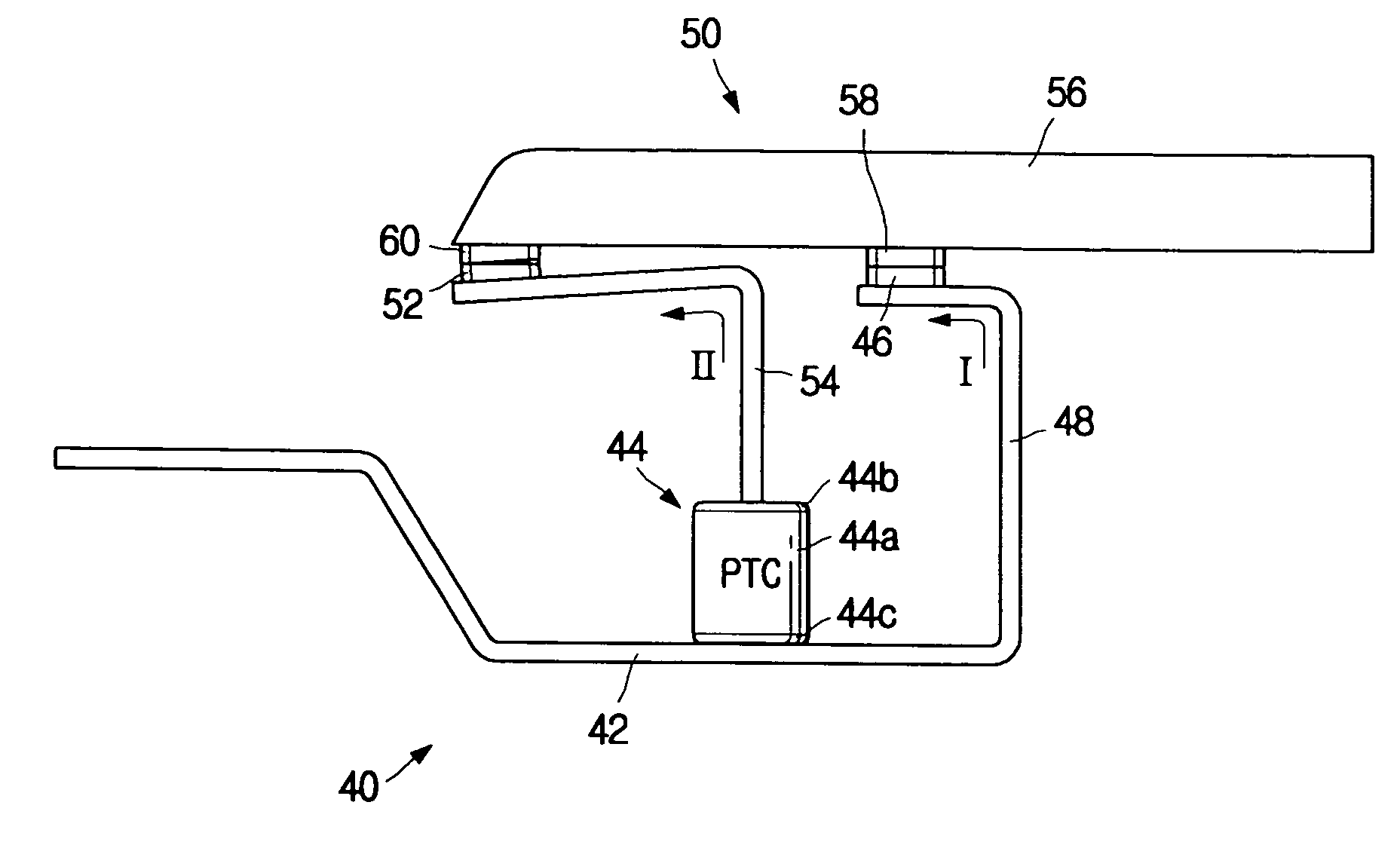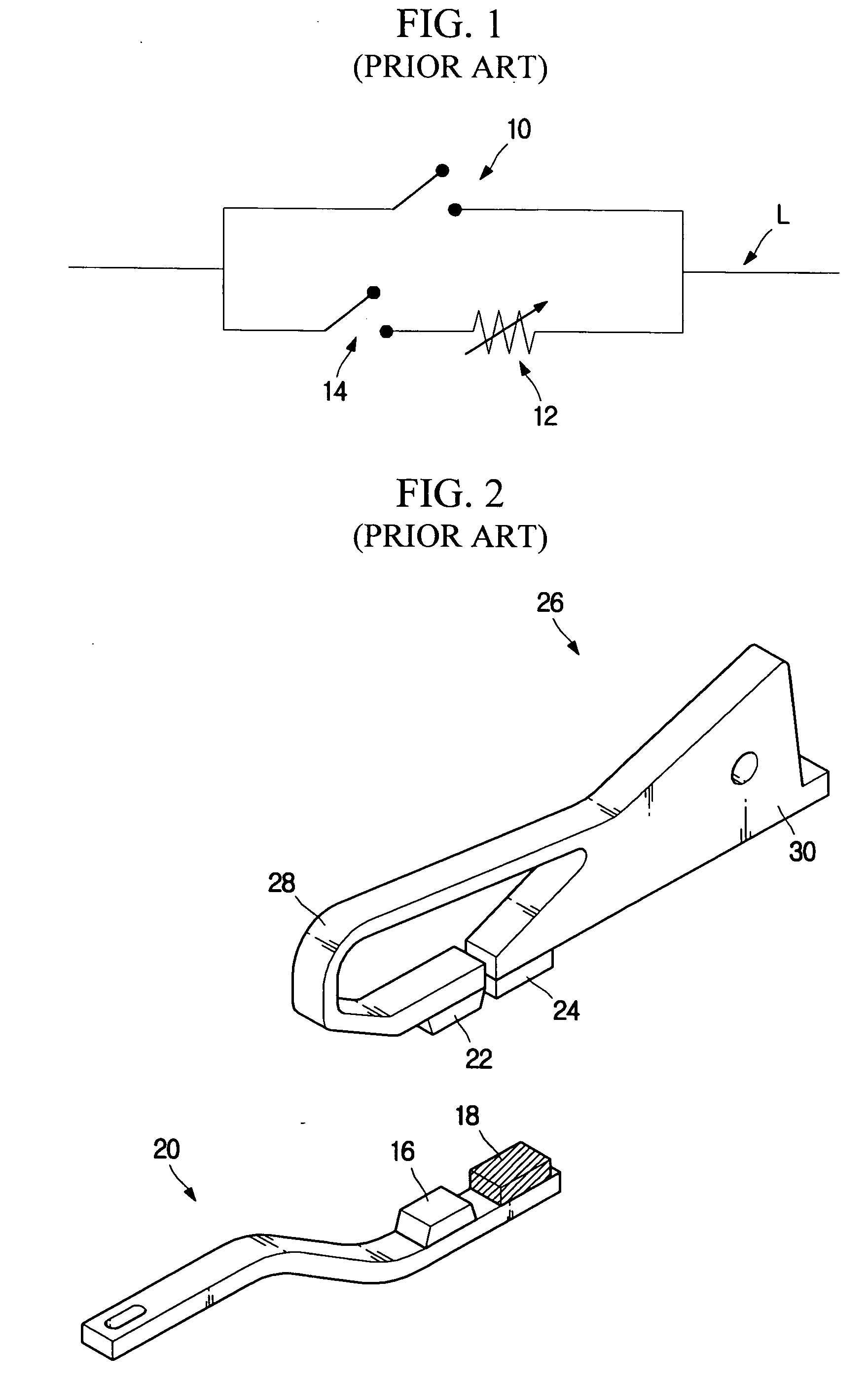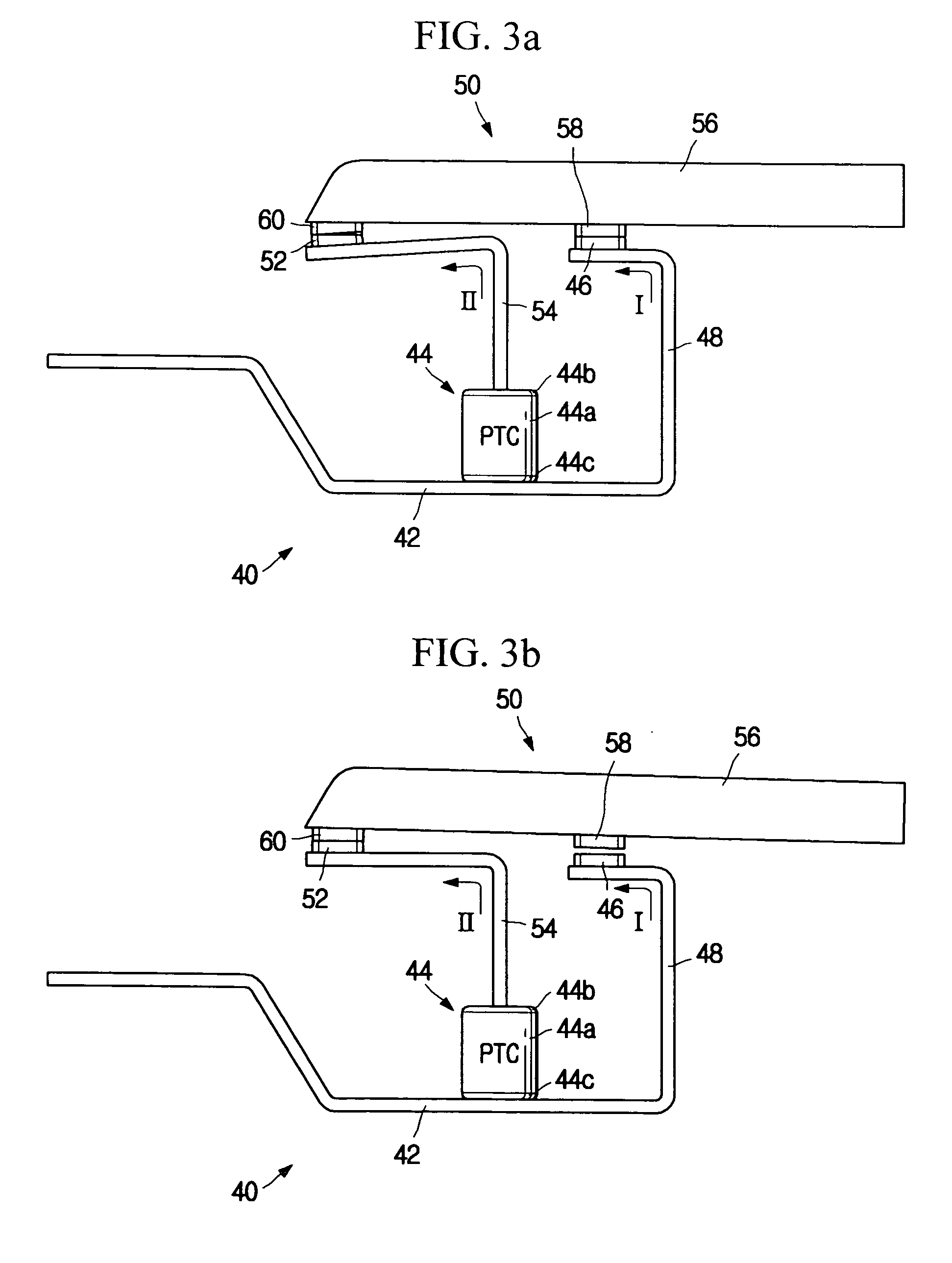Breaker for providing successive trip mechanism based on PTC current-limiting device
- Summary
- Abstract
- Description
- Claims
- Application Information
AI Technical Summary
Benefits of technology
Problems solved by technology
Method used
Image
Examples
first embodiment
[0051]FIGS. 3a to 3c respectively show a breaker-closed state, a first switch tripped state, and a first / second switch tripped state of a breaker according to the present invention.
[0052] The breaker according to the first embodiment of the present invention includes a fixed arm 40 and a movable arm 50 in brief as shown in FIGS. 3a to 3c. The fixed arm 40 includes a fixed arm member 42 having one end electrically connected to a power source of a line, a PTC (Positive Temperature Coefficient) current-limiting device 44 attached to the fixed arm member 42, a first fixed contact point 46, a first fixed arm conductor 48 to which the first fixed contact point 46 is attached and guiding electric flow toward the first fixed contact point 46, a second fixed contact point 52, and a second fixed arm conductor 54 to which the second fixed contact point 52 is attached and guiding electric flow toward the second fixed contact point 52.
[0053] The second fixed arm conductor 54 has a geometric str...
second embodiment
[0072]FIGS. 4a to 4c respectively show a breaker-closed state, a first switch tripped state, and a first / second switch tripped state of a breaker according to the present invention.
[0073] According to the second embodiment of the present invention, as shown in FIGS. 4a to 4c, a second vertical fixed arm conductor 54a and a second horizontal fixed arm conductor 54b are coupled to be pivotable on the center of a rotary axis 62, and the second vertical and horizontal fixed arm conductors 54a and 54b are elastically coupled using a torsion spring 64. Other configurations of the second embodiment are substantially identical to those of the first embodiment.
[0074] Like the first embodiment, an angle θ1 between the first fixed and movable contact points 46 and 58 is relatively greater than an angle θ2 between the second fixed and movable contact point 52 and 60 in the breaker of the second embodiment, as shown in FIG. 4c. Thus, if the breaker is closed as shown in FIG. 4a, the second hori...
third embodiment
[0076]FIGS. 5a to 5c respectively show a breaker-closed state, a first switch tripped state, and a first / second switch tripped state of a breaker according to the present invention.
[0077] According to the third embodiment of the present invention, a guide housing 70 having a compression spring 66 mounted therein and an opening 68 formed at its lower end is provided below the movable arm 50 as shown in FIGS. 5a to 5c. In addition, the second movable contact point 60 is received in the guide housing 70 so that its one side faces the compression spring 66 and the other side is exposed outward to face the second fixed contact point 52. In addition, the second fixed contact point 52 has a shape corresponding to the opening 68 so that it may be inserted through the opening 68 prepared in the lower portion of the guide housing 70. Other configurations of the third embodiment are substantially identical to those of the first embodiment.
[0078] Like the first embodiment, an angle θ1 between ...
PUM
 Login to View More
Login to View More Abstract
Description
Claims
Application Information
 Login to View More
Login to View More - R&D
- Intellectual Property
- Life Sciences
- Materials
- Tech Scout
- Unparalleled Data Quality
- Higher Quality Content
- 60% Fewer Hallucinations
Browse by: Latest US Patents, China's latest patents, Technical Efficacy Thesaurus, Application Domain, Technology Topic, Popular Technical Reports.
© 2025 PatSnap. All rights reserved.Legal|Privacy policy|Modern Slavery Act Transparency Statement|Sitemap|About US| Contact US: help@patsnap.com



